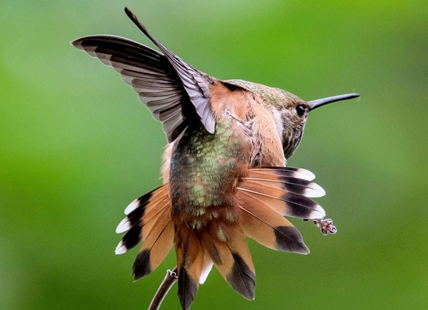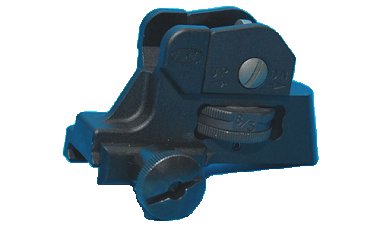How to attract hummingbirds that may arrive early in Kamloops, Okanagan
Three species of migratory hummingbirds could be arriving in backyards in the Okanagan and Kamloops as early as next month. The rufous, calliope and and black-chinned hummingbirds head up the Pacific Coast in early spring every year. “They will be here in April but it’s definitely...

Three species of migratory hummingbirds could be arriving in backyards in the Okanagan and Kamloops as early as next month.
The rufous, calliope and and black-chinned hummingbirds head up the Pacific Coast in early spring every year.
“They will be here in April but it’s definitely possible to see them showing up here in March,” said Kurtis Huston, owner and bird feeding expert at Wild Birds Unlimited in Kamloops. “Hummingbirds migrate based on daylight, they can arrive early or late.”
Huston said it is unlikely to find a black-chinned hummingbird in Kamloops but the other two species are prevalent. There are many things interested residents can do to attract the unique tiny birds to their properties, and keep them safe, fed and happy until it is time for them to go south again.
“They are nectar eaters and we can mimic nectar with a four to one ratio of water to sugar,” Huston said. “Plant tubular plants that are blooming. The birds are attracted to red and appreciate native plants. Have areas in your yard such as bushy shrubs for building nests and shelter. They need a water source, they really like dripping or misting water.”
READ MORE: Hummingbird helpers in southern B.C. having tough week thanks to frigid weather
Huston said growing plants native to the area will attract more insects for the hummingbirds to feed on and more spiders. The birds use the webs to build their nests with.
You can attract more birds by hanging a feeder in a good location.
“Birds forage visually so it is important to have a feeder in an open place where they can find it,” Huston said. “Have it slightly in the shade to prevent the nectar from spoiling quickly.”
Huston recommends using feeders that are safe for the birds, easy to clean and drip free. They should be designed with comfortable perches and protective guards against ants and insects. Insects can bite the tongues of hummingbirds and kill them.
It is important to keep the feeders free from bacteria by replacing the nectar frequently and keeping the parts clean.
“In cooler weather you clean and replace the feeder every four or five days but in the heat the nectar can spoil very fast,” he said. “It needs to be replaced every one or two days. When nectar gets cloudy or mouldy it becomes a major hazard for the birds.”
READ MORE: iN VIDEO: Rescued North Okanagan owl released back into the wild
As hummingbird migration patterns are not exact, Huston said to provide feeders two weeks before you expect them in the spring and two weeks after you think they have left in the fall, in case there are stragglers.
The calliope is the smallest bird in North America, the size of a thumb and the weight of a penny.
“The calliopes are fierce, with short wings and a tinge of green in colour, with the females being a paler green and the males having a magenta neck marking,” Huston said. "They are the smallest bird in North America north of Mexico, and they are the smallest long distant migrant in the world travelling up to 8,000 kilometres yearly."
The rufous is a bit bigger.
“The rufous is bright orange, is known to be territorial, and has a lot of energy," Huston said. "They have been documented showing up year after year to the same feeders, even when the feeders aren’t still up they will show up to look for it."
Huston said the birds winter in Mexico and Southern California. As the days get longer they make their way north through California and Oregon to breeding territories as far as Alaska.
Huston is connected with local naturalist clubs, Birds Canada and the B.C. Wildlife Park. He is interested in educating the public on conservation practices to help preserve our songbird species.
For more information on birds reach out to him here.
To contact a reporter for this story, email Shannon Ainslie or call 250-819-6089 or email the editor. You can also submit photos, videos or news tips to the newsroom and be entered to win a monthly prize draw.
We welcome your comments and opinions on our stories but play nice. We won't censor or delete comments unless they contain off-topic statements or links, unnecessary vulgarity, false facts, spam or obviously fake profiles. If you have any concerns about what you see in comments, email the editor in the link above.

 Valandos
Valandos 















